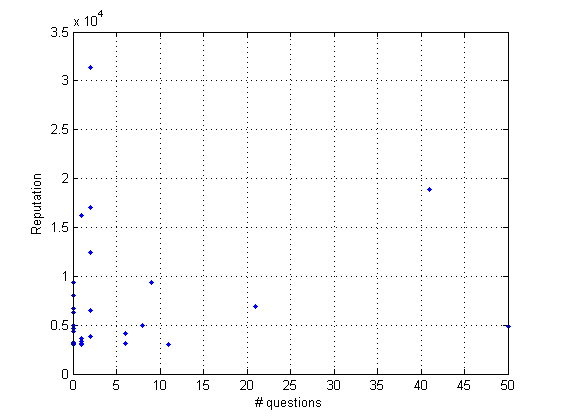As I am studying dimension reduction methods, @OlliNiemitalo answer triggered my curiosity. I pushed the study to rank 30, and the answer/reputation graph looks like:
No drastic change in the trend. However, more points cluster at the bottom. So I tried with other easy to reach variables: Reputation, #Month (of presence), #Answers, #Questions, #PeopleReached. The question/reputation graph possibly rules out the number of questions as a fine variable:
Then, going to 3D, we can try answer/month/reputation:
or answer/reach/reputation:
Those 3D graphs seem to display a bended shape, which clusters when projected in 2D. The crowd of visionaries (early adopters) is quite apparent from the figures. Time matters a bit apparently. But there should be hidden variables. I hope I am not wasting your time (and mine) on this. I am not sure this deserves higher-order nonlinear dimension reduction techniques.






